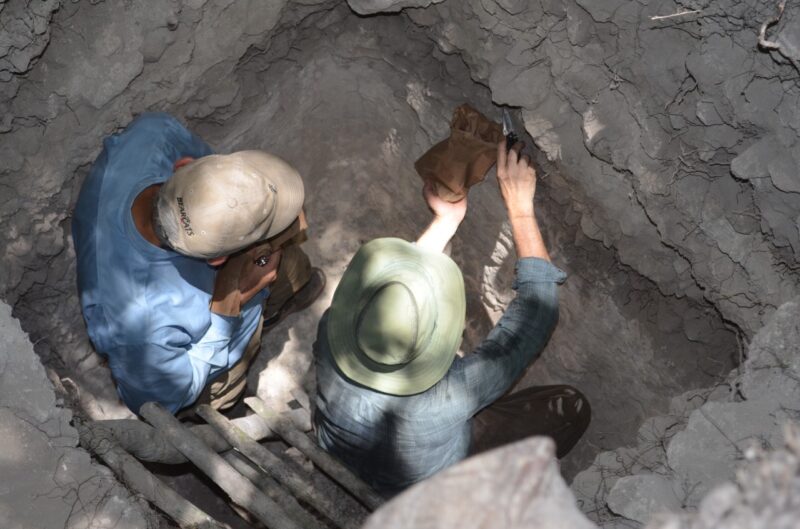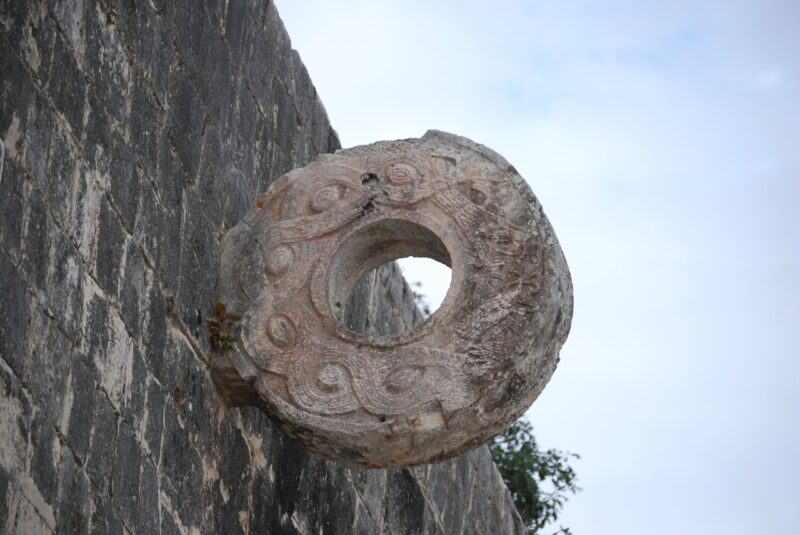The ancient Maya often built large ball courts in the center of their cities. The courts served for sports, social gatherings, and ceremonies. New excavations show that they blessed the sites during construction with hallucinogenic plants and chili peppers.
During excavations at the ancient city of Yaxnohcah on the Yucatan Peninsula, archaeologists stumbled across a patch of dark soil underneath the plaza floor on which the ballcourt was built. DNA analysis of the soil showed traces of four plants: chili peppers, lancewood, morning glory, and jool.
To the Maya, these had “religious associations and medicinal properties” and served in divination rituals, according to the study. Morning glory is a hallucinogenic, chili peppers warded off disease, and lancewood leaves had antibiotic properties. The Maya regularly wrapped ceremonial offerings in jool leaves.
“The fact that these four plants, which have a known cultural importance to the Maya, were found in a concentrated sample tells us it was an intentional and purposeful collection,” wrote co-author Eric Tepe.

David Lentz and Nicholas Dunning gather samples at the ancient Maya city of Yaxnohcah. Photo: David Lentz
Needle in a haystack
Actually detecting these plants within the soil sample was like finding a needle in a haystack, said lead author David Lentz. Plants deteriorate quickly in the Tropics, and it is rare to detect plant remains at such sites.
Archaeologists have known for years from historical sources that the Maya used such plants in their ceremonies, but it has been almost impossible to find them. “[That’s] what makes this discovery using eDNA so extraordinary,” said co-author Nicholas Dunning, who collected the five-gram soil sample.
He preserved the sample with RNA (a solution that stops bacterial growth), sealed it, and took it to the lab.
As organisms interact with the environment around them, they leave behind traces of their DNA. The analysis found over 100,000 DNA sequences in the sample. “Of those, only 15 were from plants,” said Lentz. Hence, the needle in a haystack. The plants dated to approximately 2,000 years ago.
“When they erected a new building, they asked the goodwill of the gods to protect the people inhabiting it,” Lentz explained in a statement. “Some people call it an ‘ensouling ritual,’ to get a blessing from and appease the gods.”
It seems they performed such rituals even with their ball courts. “The nearest analogy today might be like christening a new ship,” said Lentz.
“Ball courts” suggests that the Maya used these spaces only for sport, but they were also sacred areas, often close to the city temples.






